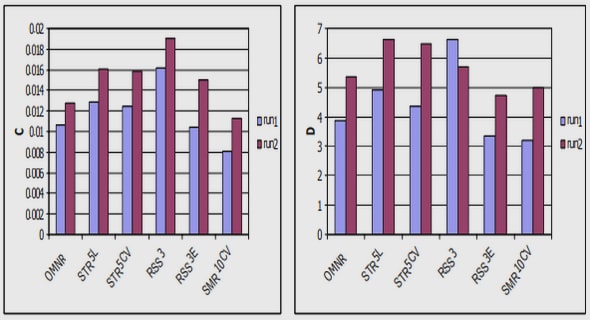(Downloads - 0)
For more info about our services contact : help@bestpfe.com
Table of contents
1 Introduction
1.1 Background
1.2 Objective of this Thesis
1.3 Related Work
1.4 Research Questions
1.5 Thesis Layout
1.6 Scope of this Thesis
2 Introduction to Wireless Mesh Networks
2.1 Wired Networks vs. Wireless Networks
2.1.1 Wireless Networks
2.2 Mesh Networking Defined
2.2.1 Nodes and Links
2.2.2 Control Issues
2.2.3 Modern Mesh Networking
2.2.4 Wireless Networking Structure
2.2.5 Conquering Transmission Distance Limitations
2.3 Network Progression
2.3.1 Types of Wireless Networks
2.3.1.1 Wireless Mesh Networks
2.3.1.2 Point to Point Networks
2.3.1.3 Point to Multi Point Networks
2.4 Types of Networking Addressing
2.4.1 Unicast Addressing
2.4.2 Broadcast Addressing
2.4.3 Multicast Addressing
2.5 Bridging and Routing
2.6 Advantages of WMNs
2.6.1 Non Line of Sight
2.6.2 Seamless Communication
2.7 Resource Management in WMNs
2.8 Taxonomy
2.8.1 Mobile Adhoc Networks (MANETs)
2.8.2 Classification of Multihop Wireless Networks
2.8.3 Difference b/w WANs and WMNs
2.9 Security in WMNs
2.9.1 Security Model for WMNs
3 Routing Protocols- Protocols in WMNs
3.1 Routing
3.2 Types of routing
3.2.1 Static Routing
3.2.2 Dynamic Routing
3.3 Protocols
3.3.1 Routing protocols
3.3.2 Comparison of Interior and Exterior Routing Protocols
3.4 Common Types of Routing Protocols
3.4.1 Border Gateway protocol
3.4.2 Dec-net routing Protocol
3.4.3 Enhanced IGRP
3.4.4 Interior Gateway protocol
3.4.5 IBM Routing Protocols
3.4.6 IP Multicast
3.4.7 Open Shortest Path First
3.4.8 Resource Reservation Protocol
3.4.9 Routing Information Protocol
3.4.10 Simple Multicast Routing Protocol
3.4.11 Netware Link Service Protocol
3.4.12 Open System Interconnection Routing
3.5 Redeveloping Route Information Between Protocols
3.6 Common Routing in Mobile Ad-hoc Networks
3.6.1 Link State Routing
3.6.2 Distance Vector Routing
3.6.3 Source Routing
3.6.4 Flooding
3.7 Basic Properties of Protocols in MANETs
3.7.1 Distributed Nature
3.7.2 Loop Free Environment
3.7.3 Demand Based Criteria
3.7.4 Optimum uni-directional link
3.7.5 Alternating Route Policy
3.7.6 Maintains Quality of Service
3.8 Protocols Used in MANETs
3.8.1 Ad-hoc on-demand Distance Vector
3.8.1.1 Process to find out Route
3.8.1.2 Route Management Policy
3.8.2 Dynamic Source Routing Protocol
3.8.2.1 Route Analysis
3.8.2.2 Route Control Mechanism
3.8.3 Optimized Link State Routing Protocol
3.8.4 Destination Sequenced Distance Vector Routing
3.8.5 Temporarily Ordered Routing Algorithm
3.8.6 Zone Routing Protocol
3.9 Wireless Mesh Network Protocols
3.9.1 Pre-requisite/General Perspective for WMNs Routing
4 Introduction to Research Methodology
4.1 Introduction of Research
4.1.1 A Way of Thinking
4.2 Types of Research
4.2.1 Qualitative Research
4.2.2 Quantitative Research
4.3 What is Research Methodology
4.3.1 Methods of Knowing
4.3.1.1 Method of Obstinacy
4.3.1.2 Method of authority
4.3.1.3 Method of Perception
4.3.1.4 Method of Science
4.4 Combination of both Research Types
4.4.1 Thesis Research Type
4.5 Steps in Research Methodology
4.5.1 Identify a Problem
4.5.2 Build the Questions
4.5.3 Literature Study of Topic
4.5.4 Start Writing New Research
4.5.5 Getting Started With Simulation Environment
4.5.6 Implement the Simulation
4.5.7 Simulation Results
4.6 Research Strategies
5 Design Parameters; Guide to Simulation Environment
5.1 Design Parameters
5.1.1 Delay/End to End Delay
5.1.2 Throughput
5.1.3 Network Load
5.1.4 Jitter
5.1.5 Packet Loss
5.1.6 Routing Overhead
5.1.7 Packet Delivery Ratio
5.2 What is Simulation
5.2.1 Why Simulation
5.2.2 Simulation Environment Used
5.2.3 What can be Learnt from OPNET
5.3 Division of Simulation Work
5.3.1 Highest Level
5.3.2 Middle Level
5.3.3 Low Level
5.4 Diagram Showing Traffic
5.5 Flow of Work in OPNET
5.6 Application Areas of OPNET
5.6.1 Evaluation of Routing Algorithms
5.6.2 Protocol Management
5.6.3 Wireless & Satellite Communication Protocols
5.6.4 Network Management
5.6.5 Network Planning
5.7 Tabs in OPNET
5.7.1 Scenario Tab
5.7.2 Topology Tab
5.7.3 Traffic Tab
5.7.4 Protocols Tab
5.7.5 Simulation Tab
5.7.6 Result Tab
5.7.7 DES Tab
6 Simulation Results and Analysis
6.1 Introduction
6.2 First Scenario
6.2.1 Second Scenario
6.2.2 Third Scenario
6.3 Simulation Results
6.3.1 When Nodes=15, AODV Performance
6.3.2 When Nodes=15, DSR Performance
6.3.3 When Nodes=15, OLSR Performance
6.4 Increasing the Nodes
6.4.1 When Nodes=30, AODV Performance
6.4.2 When Nodes=30, DSR Performance
6.4.3 When Nodes=30, OLSR Performance
6.4.4 When Nodes=60, AODV Performance
6.4.5 When Nodes=60, DSR Performance
6.4.6 When Nodes=60, OLSR Performance
6.5 All Parameters; All Scenarios
6.5.1 AODV Performance
6.5.2 DSR Performance
6.5.3 OLSR Performance
6.6 Performance Comparison
6.6.1 All Protocols, 15 Nodes
6.6.2 All Protocols, 30 Nodes
6.6.3 All Protocols, 60 Nodes
6.7 Final Comparison and Statistical Information
Conclusion
Future Work
Appendix- Simulation Steps
References


